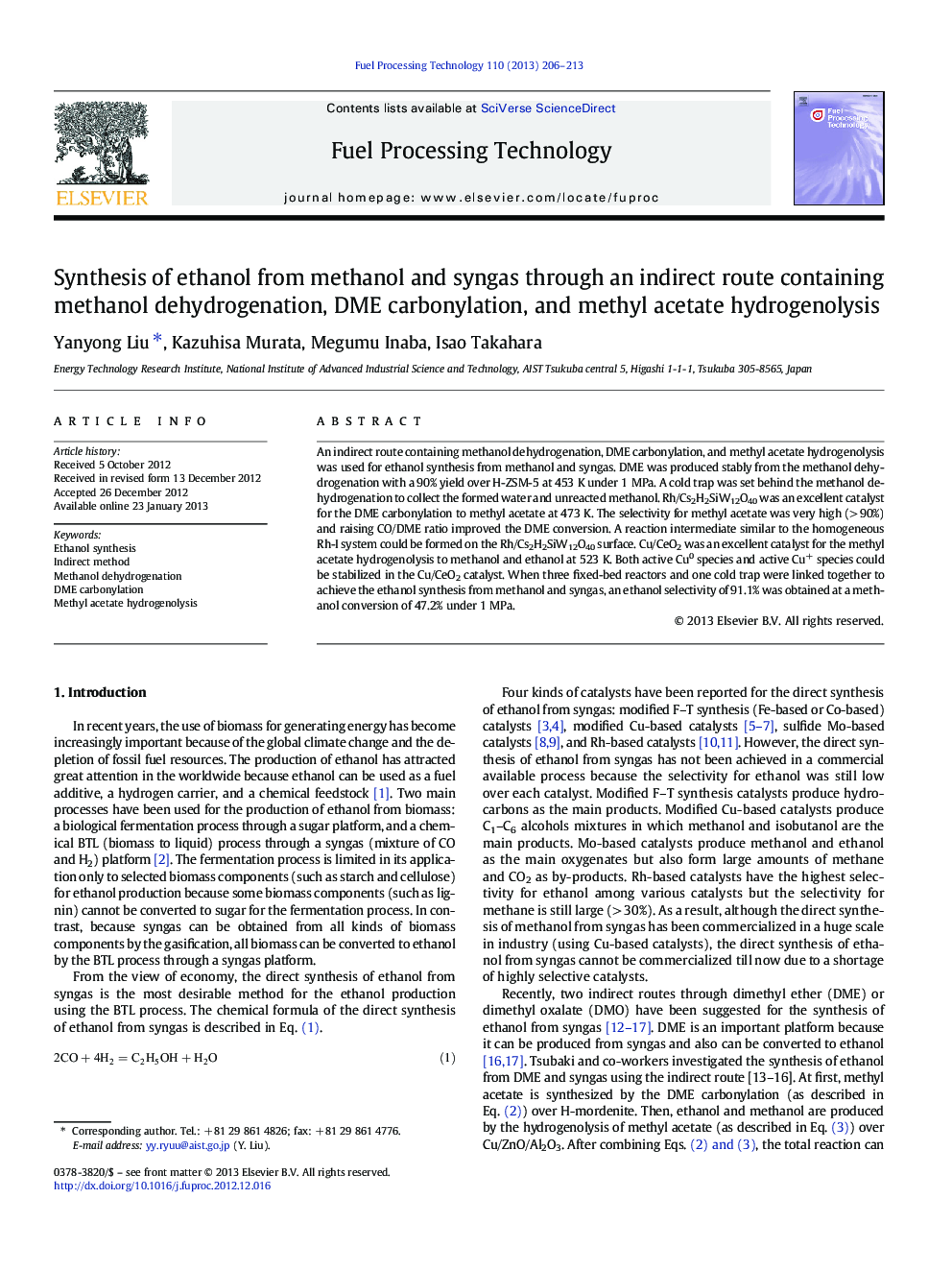| کد مقاله | کد نشریه | سال انتشار | مقاله انگلیسی | نسخه تمام متن |
|---|---|---|---|---|
| 209999 | 461695 | 2013 | 8 صفحه PDF | دانلود رایگان |

An indirect route containing methanol dehydrogenation, DME carbonylation, and methyl acetate hydrogenolysis was used for ethanol synthesis from methanol and syngas. DME was produced stably from the methanol dehydrogenation with a 90% yield over H-ZSM-5 at 453 K under 1 MPa. A cold trap was set behind the methanol dehydrogenation to collect the formed water and unreacted methanol. Rh/Cs2H2SiW12O40 was an excellent catalyst for the DME carbonylation to methyl acetate at 473 K. The selectivity for methyl acetate was very high (> 90%) and raising CO/DME ratio improved the DME conversion. A reaction intermediate similar to the homogeneous Rh-I system could be formed on the Rh/Cs2H2SiW12O40 surface. Cu/CeO2 was an excellent catalyst for the methyl acetate hydrogenolysis to methanol and ethanol at 523 K. Both active Cu0 species and active Cu+ species could be stabilized in the Cu/CeO2 catalyst. When three fixed-bed reactors and one cold trap were linked together to achieve the ethanol synthesis from methanol and syngas, an ethanol selectivity of 91.1% was obtained at a methanol conversion of 47.2% under 1 MPa.
► Ethanol was produced by an indirect method using three reactors and one trap.
► Trap was set behind the methanol dehydration to collect the formed water.
► Rh/Cs2H2SiW12O40 was found as an excellent catalyst for the DME carbonylation.
► Cu/CeO2 was found as an excellent catalyst for the methyl acetate hydrogenolysis.
► Ethanol selectivity of 91.1% was obtained at a methanol conversion of 47.2%.
Journal: Fuel Processing Technology - Volume 110, June 2013, Pages 206–213